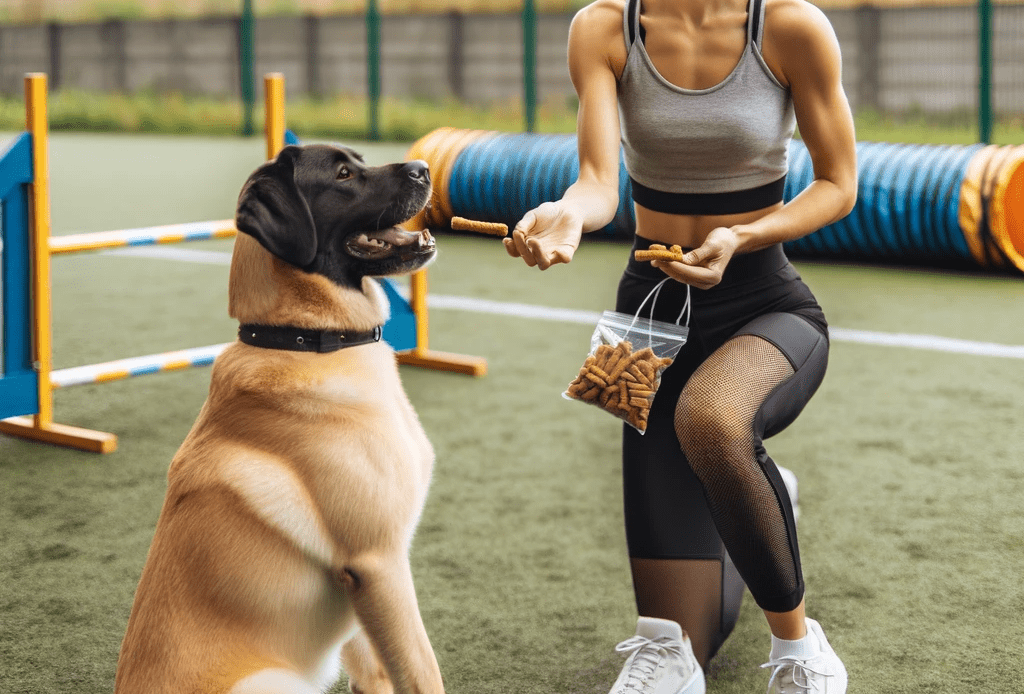Intro
Dog training treats are a popular tool for pet owners to use when teaching their furry friends new skills and behaviors. Not only do these
treats serve as a tasty incentive for dogs, but they can also be an effective way to reinforce positive behavior and strengthen the bond
between dog and owner. In this blog post, we will explore the benefits of using dog training treats and provide tips on how to use them
in the most effective way for your furry friend. Whether you have a new puppy or an older dog, incorporating training treats into your
training routine can make all the difference in achieving success and building a stronger relationship with your canine companion.

The Power of Dog Training Treats
Unleash the power of dog training treats and see the positive transformation in your furry friend’s behavior. By tapping into a dog’s
inherent love for food, these treats act as an effective motivation tool that can amplify the results of your training efforts. Dog training
treats, if used correctly, can bolster good behavior and minimize the not-so-good ones. But remember, while these treats can be
magical in behavior management, they’re not meant to replace your dog’s need for love and attention. Think of them as a key
component of your dog-training toolbox, providing an extra boost to help shape your pup’s actions and attitudes. As you journey
through the fascinating process of dog training, remember that these treats are here to assist you, adding a deliciously appealing layer
to your training strategy.
Choosing the Right Treat for Your Dog
The quest to find the ideal treat for your canine companion doesn’t have to be daunting. Let’s put health at the forefront of this mission.
Picking healthy dog treats doesn’t just amplify your training results; it also safeguards your pet’s well-being. So, seek out those treats
that have natural ingredients listed on their labels, and steer clear of treats high in fat and sugar. You’d be surprised how these small
changes can lead to big wins in your dog’s health.
Size, as we know, does matter. Not every treat fits all. Take your dog’s size into consideration while picking the treat. Your tiny pup might
find a large treat overwhelming, whereas your big, boisterous buddy might barely register a small treat as a reward. The right-sized treat
can enhance the training experience for your furry friend, making it a fun and enjoyable learning journey.
While choosing a treat, be a little adventurous, too! Dogs love variety, so don’t hesitate to mix things up a bit. You might find your pet
more excited and more eager to learn when you’re offering a selection of treats. Just remember to always keep their health and size in
mind, and you’ll have the perfect training treat on hand.


Timing is Everything
The art of effectively utilizing dog training treats lies in the timing. Delivering the treat immediately after your pup has exhibited
the desired behavior is paramount. The goal is to create a strong link between the good behavior and the tasty reward. This
instantaneous reward will help your furry friend make the association faster, thus enhancing the learning process. It’s like hitting the
jackpot for your dog each time they act as you want them to! With time, your pup will connect the dots and realize that good behavior
equals a yummy treat, instilling a sense of achievement in them. So, hold on to that treat, keep your eyes peeled, and as soon as your
pooch makes the right move – reward them. But remember, your aim is to amplify the positive actions of your pet, not to scatter treats
arbitrarily. Your furry friend is smart and will soon catch on to this rhythm, making the training process even more effective!
How to Give Dog Training Treats
Mastering the method of giving dog training treats can be just as crucial as the timing involved in it. Imagine holding the treat in your
hand, allowing your canine companion to get a whiff of it but not permitting them to snatch it until they have performed the desired
action. The scent will lure them in, and the anticipation of the reward will keep them focused on what they need to do to earn it.
However, it’s vital to vary your approach to giving rewards. Sometimes, substitute verbal praise or a petting session in place of the treat.
By doing this, you ensure that your dog doesn’t always anticipate a treat for good behavior. This not only keeps them engaged in the
training but also prevents them from becoming overly dependent on treats for motivation.
Incorporating different types of rewards makes the training more exciting and unpredictable for your pet. If they don’t know what to
expect, they’ll be more interested in the training process. Additionally, varying rewards ensure that your pet is responding to your
commands, not just to the prospect of a tasty treat.
Also, remember that the treat doesn’t need to be devoured to be effective. Letting your dog lick or chew on it for a moment before taking
it away can be equally motivating. In fact, this could also increase their desire to work harder for the reward.
In summary, when using treats for training, use them judiciously and imaginatively, keeping your pet’s attention focused on learning, not
just on the reward. By doing so, you’ll keep the training sessions interesting, effective, and fun for both you and your pet.


The Benefits of Dog Training Treats
Harnessing the benefits of dog training treats can dramatically enhance your furry friend’s learning journey. The secret lies in their
appeal to a dog’s innate desire to work for food. When you incorporate treats into your training regimen, you are, in essence, stimulating
this natural instinct. This not only accelerates the learning curve but also injects a dose of fun into the training process. Who wouldn’t
like a tasty reward for a job well done?
The positive effect of training treats extends beyond behavior modification. Your dog begins to associate learning with something
delightful, and that is a powerful motivator. Over time, your pet may start looking forward to these training sessions as they come to
link them with the delightful treats. And here’s the best part: This positive association isn’t limited to training alone. It permeates your
overall relationship with your pet, helping foster a stronger bond between the two of you.
But the benefits don’t stop there. Training treats can help build confidence in your dog, particularly if they are a little shy or anxious. The
reward of a treat after successfully executing a command can be a real confidence booster. They feel accomplished and proud, which
can do wonders for their overall demeanor.
Additionally, using treats as rewards can also promote good oral health. Many dog training treats are designed to be chewy and help
keep your pet’s teeth clean and gums healthy. So, while your furry friend is happily munching away, they’re also getting an impromptu
dental cleaning – a win-win situation for both of you!
To sum it up, dog training treats are more than just enticing rewards. They’re tools that help foster positive behavior, build confidence,
improve dental health, and strengthen the bond between you and your pet. So, as you embark on the delightful journey of training your
dog, remember to pack in some of these fantastic treats!
Overcoming Challenges in Using Dog Training Treats
Despite their many benefits, dog training treats do present certain obstacles that dog owners need to navigate. One such challenge is a
dog’s potential over-dependency on treats. If your canine companion starts expecting a tasty reward for every command followed, you
might find yourself with a furry friend who responds more to the allure of treats rather than your authority. However, there’s a simple yet
effective solution to this problem.
Instead of completely removing treats from the equation, start reducing their frequency gradually once your dog has become proficient
in a certain skill. This weaning off process can be further complemented by mixing up rewards. One day, it could be a healthy dog treat;
the next, it might be a warm cuddle or a joyful game of fetch. By keeping the rewards unpredictable, your dog’s interest remains piqued,
and they don’t become overly fixated on treats.
Remember, the role of treats in dog training is not to control, but to supplement and enhance the process. They serve as an encouraging
nudge for your pet, not as the sole motivator for their actions. So, as your dog progresses in their learning journey, balance the use of
treats with other forms of positive reinforcement. This way, you can ensure that your pet’s training remains an enjoyable, effective, and
balanced process without an over-reliance on treats.
In the grand scheme of dog training, overcoming these treat-related challenges is simply another step toward a well-trained and happy
pet. So, keep those delicious dog training treats on hand, but remember to use them wisely, creatively, and above all, sparingly. With
patience, consistency, and an open mind, you and your furry friend can conquer any challenges that come your way, creating a
rewarding and bonding experience like no other.


